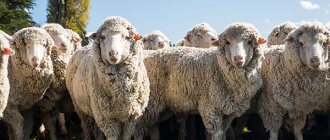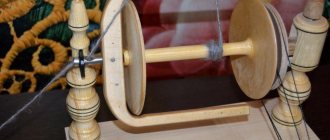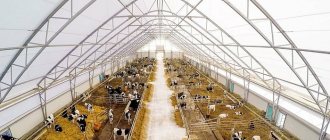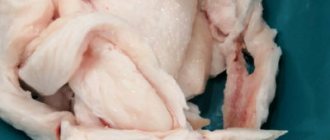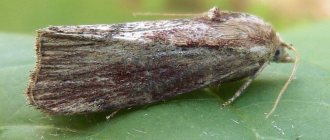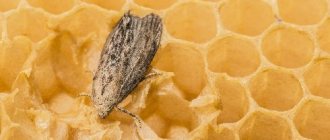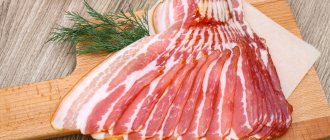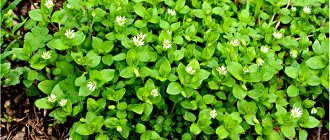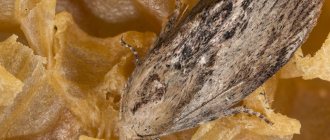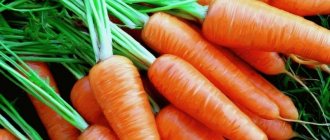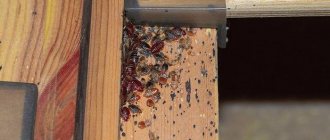Home / Fillers
Back
Published: 06/23/2021
Reading time: 4 min
0
9
In ancient times, sheep's wool was considered a gift from the gods. It was one of the first natural materials that protected humans from cold and disease. Today it has many synthetic and artificial analogues with a long series of positive qualities. But they all only imitate a product created by nature. It contains no toxins, because sheep, by their biology, ignore unnatural food and do not drink contaminated water. This is why wool is so valued as a raw material for clothing and bedding.
- 1 Extraction of raw materials and production
- 2 Classification of sheep wool and the best breeds
- 3 Material characteristics 3.1 Advantages
- 3.2 Disadvantages
Features of sheep wool
Wool is a textile fiber obtained from the shearing of sheep. It is a complex protein that has been formed over millions of years to protect warm-blooded animals in different climates and is one of the most environmentally friendly, naturally renewable and completely biodegradable materials.
The quality of the product is determined by the diameter and length of the fibers, crimp, color and adhesion strength. Fiber thickness is the most important characteristic of wool, determining quality and price.
Wool fiber is resilient and elastic - it can be bent 20 thousand times without damage (cotton breaks after 3 thousand bends, silk - 2 thousand). It has a natural crimp, which allows it to be stretched by a third and return to its previous state.
The fibers have a complex cellular structure, so they easily absorb moisture vapor by almost a third of their own weight, but repel liquid. The absorbent properties of the fiber provide comfort in both heat and cold.
Check out
How to Treat Lamb Skin, Sheep Wool: Features, Steps, Application When the air is cool and humid, the wool absorbs moisture and holds a layer of dry insulating air next to the skin.
When it's warm, the same absorption capacity absorbs sweat and keeps the heat of dry air close to the skin, allowing natural thermoregulation to work more effectively.
Wool ignites at a higher temperature than cotton and some synthetic fibers.
It has a lower flame propagation speed, low heat generation, low combustion temperature, does not melt or drip, and emits less toxic gases and smoke. It absorbs sound, like many other fabrics.
Wool resists the build-up of static electricity because moisture trapped within the fabric conducts charges, making wool items much less likely to spark and stick to your body. The natural colors of fleece are white, cream, black, brown, silver, but the fibers are easily dyed.
Thanks to this ability, wool is known for its beautiful and rich colors. Sometimes the wool “pricks” - this discomfort is caused by coarse fibers (more than 28 microns) in the composition of the product. Wool can be treated with chemicals or mixed with other fibers to eliminate the scratchy effect.
Angora goats
This type of goat produces mohair yarn, the fiber length of which is 30-46 microns in cross section. Goats are sheared in the fall and spring. One individual can produce from 4.5 to 7 kg of mohair per year.
Mohair wool is also divided into several quality levels:
- First grade mohair from two-year-old goats.
- Premium quality mohair from young kids during their first summer shearing.
- Luxury mohair groups.
A characteristic feature is that mohair yarn is always mixed. Otherwise, the product will fall apart into fibers. This is one of the main reasons for the addition of wool blends, which add fluffiness and extra shine to mohair.
Healing properties
Wool promotes a healthy lifestyle and has a therapeutic effect based on gentle contact with the skin.
- Also has healing properties:
- antimicrobial and antibacterial properties - absorbs unpleasant odors and inhibits the growth of mold, fungi and bacteria, does not support the growth of dust mites, which cause asthma attacks and respiratory diseases;
- contact with fibers stimulates the circulatory capillary system, stabilizes the heart rate, and thanks to the mild heating effect, the muscles relax, relieving tension and the effects of stress;
- relieves pain from arthritis and fibromyalgia, which promotes healthy sleep;
- for chronic skin diseases and eczema, wearing ultra-fine merino wool does not cause irritation and eases the course of the disease;
- has a naturally high level of ultraviolet protection and provides thermoregulation of the body to create a comfortable temperature;
- the fibers contain lanolin, which is produced by the sebaceous glands of sheep, it is used in cosmetics and medicines and is effective against rheumatism, enlarged skin pores, ensures breathing of the whole body, improves blood circulation under the skin and slows down the aging process.
Important! Recent research has shown that wool allergies stem from lanolin alcohols, the protective waxy layer that coats every strand of sheep's wool. If there are allergic reactions to cosmetics containing lanolin, then there will be manifestations on wool.
How to implement
After the clipping is collected, it must be cleaned and, if desired, sold. We need to find out how much 1 kg of sheep wool costs. It depends on the region.
You also need to find a company where you can donate sheep wool. In each region there are many centers for buying sheep wool.
The cost of fine wool merino wool ranges from 250 to 600 rubles. This wool is in great demand. It produces a delicate and thin thread.
Production, processing, sorting
The path of wool fiber from sheep to light industry is a technically complex and unique process that includes several stages in the production of knitted yarn and fabric sheets, namely: shearing, cleaning, sorting, carding, spinning, weaving and finishing:
- A haircut. Sheep are sheared once a year, usually in the spring. The fleece weighs on average 3–8 kg.
- Classification and sorting. The fleece is sorted into fibers of varying quality from different parts of the body. The best quality is from the shoulders and sides of the sheep, it is used for clothing, the lowest quality is from the shins, used for carpet yarn.
- Cleaning . Raw wool contains sand, dirt, grease, and sweat, which accounts for 30–70% of the total weight. To remove these contaminants, wool is washed in soap-alkaline solutions, wrung out and dried with a hairdryer. At this stage, the lanolin is separated.
- Carding. The fibers are passed through a series of metal teeth, which straighten them and form parallel strands. This removes short fibers and residual contaminants.
- Spinning. Strands of fibers are twisted together into one thread, which may consist of 3-4 strands. Because the fibers have good cohesion, they can be easily joined, stretched and twisted into yarn, which is then wound onto bobbins. The yarn can be coarse for making carpets, finer yarns are used for upholstery, and very fine yarns are used for high quality clothing that can be woven or knitted. Worsted yarn is thin and smooth, while knitted yarn has a more voluminous texture.
- Weaving. The yarn is then woven into fabric. This can be done in two ways: knitted fabric is produced by connecting loops on knitting machines, woven fabrics are produced on looms by intertwining weft threads with warp threads, which determine the length of the fabric.
- Finishing. Finished fabrics, worsted and knitted, go through a series of finishing processes to give the wool its characteristic softness and texture - washing, steaming, shrinking, ironing and dyeing. After this, the fabric is ready for the work of designers and fashion designers for the production of clothing, knitwear and woven interior products.
Cashmere goats
The finest cashmere is the downy undercoat of Himalayan goats. The name was given in honor of the region of the famous Hindustan Peninsula, which is located in the Himalayan highlands.
Cashmere of excellent quality comes from animals that are raised in the harsh weather conditions of Mongolia.
- The average fiber length is from 227 to 43 cm.
- The longest ones grow on the neck and under the abdomen.
- Such fibers are distinguished by their high price.
- The fiber thickness is 15 - 17 microns.
- One goat produces 180-220 grams of raw cashmere.
After the cleaning process, only 90-120 g of fluff remains.
Cashmere products are thin, soft and pleasant to the touch. To reduce the cost of products, manufacturers add synthetic threads to wool.
Directions in wool farming
Wool differs in density, color, shine and other important properties, depending on the breed of sheep, age, time of shearing, feeding diet and grazing areas. In breeding wool sheep, there are 4 directions, depending on the thickness of the resulting fiber.
Fine-fleece
The finest (10–14 µm) and thinnest (15–25 µm) fibers 75–100 mm long are obtained from wild sheep (mouflons), the undercoat of certain types of coarse wool sheep, and old wool type merino sheep. These are various merino sheep breeds from Australia (80%), New Zealand, South Africa, etc. The breeds are typical for desert and steppe regions.
Did you know? Napoleon's conquest of Spain in 1809 allowed the Merino breed to spread to other countries. Prior to this, the export of merino beyond the borders of Spain was punishable by death until the 18th century.
The finest Australian and New Zealand merino wool with a fiber thickness of less than 16.9 microns is the industry benchmark for quality. It is elastic and can bend 20,000 times before it breaks and becomes damaged.
The finer the fibers, the softer the wool, which is why merino wool is popular among luxury clothing brands. A Merino sheep can produce up to 4–6 kg of fleece per year. Rams produce more than ewes due to their larger size. This amount of raw material is enough for 4-5 sweaters.
Semi-fine fleece
Such raw materials are provided by sheep that are bred in regions with a mild, humid climate - the Tsigai breed, new breeds of semi-fine-fleece sheep in Russia, short-wooled breeds of England (Romney Marsh, Lincoln), crosses of fine-fleece and coarse-wool sheep, and some coarse-wool breeds. The average fiber thickness is 26–40 microns.
Semi-coarse
The thickness of semi-coarse wool fibers (such as smushka or carpet) is 41–60 microns. The raw materials are obtained from coarse-haired and some types of long-haired breeds that are grown in mountainous areas.
Long-wool sheep produce raw materials that are not as soft as merino sheep, but they are long-fibered (up to 20–25 cm) and strong, which is convenient for spinning, and products made from such raw materials acquire a silky shine.
Rough-haired
The sheep from which the coarse fleece is obtained are desert and semi-desert breeds. Breeds of meat and meat and dairy production also produce coarse and semi-coarse fiber. The thickness of coarse fibers is over 61 microns. They are used for outerwear, making felt or carpets. They are more durable and less susceptible to pilling (formation of pellets).
Did you know? The ancient Greeks lined their helmets with felt, and Roman legionaries used wool felt breastplates to protect against puncture wounds.
Merino sheep
The wool of this individual is considered to be the highest quality of all. The fiber length reaches 15 cm, and the thickness is from 10 to 30 microns.
Merino yarn has a high price and is divided into several quality levels, depending on the cross-section of the fibers:
- Less than 16.0 microns - Ultrafine;
- 20.0 – 22 microns – Medium;
- 16.5 – 19 microns – Superfine;
- 17.7 – 18.0 µm -Fine;
- More than 25 microns - Strong.
The main producers of high-quality wool from merino sheep are Australia, China, and the USA.
Application: where and what it is used for
Mankind's use of sheep wool dates back thousands of years. Spinning, felting, and weaving are some of the most ancient crafts. We know such products as shoes used by the Sumerians, woven fabrics of the Egyptian pharaohs, and felt yurts of nomadic tribes.
Today, most wool (11.5–24 microns in diameter) is turned into soft fabrics for clothing and yarn for knitted fabrics. The remainder is used in the production of sweaters, socks, blankets, rugs, carpeting, insulation and upholstery.
Wool carpets are fire-resistant and are used on trains and airplanes for safety reasons. Wool is used in clothing for firefighters, soldiers and people in other professions where there is a risk of fire.
Using wool car covers or carpeting reduces the risk of electric shock due to the build-up of static electricity when a person touches a grounded object.
Wool felt covers piano hammers and is used to absorb odors and noise from heavy equipment and stereo speakers. Sauna hats and slippers are also made from felt.
The pool table cover is made of wool cloth, and the baseballs have 200 meters of yarn wound inside them to absorb the force of the blow.
Wool is used in reusable cloth diapers. The outside of the wool fiber is hydrophobic (repels water) and the inside is hygroscopic (attracts water), allowing wicking and keeping the top dry.
In addition, wool material is waterproof, breathable and antibacterial . Merino wool is used in the production of baby blankets and sleeping bags. Wool underwear, according to recent research, prevents irritation and rashes from sweat because it absorbs moisture more easily than items made from other fibers.
A mixture of wool and Kevlar is widely used in body armor, making it lighter, cheaper and more effective in wet conditions than Kevlar alone, which loses 20% of its effectiveness when wet. The interweaving of wool and Kevlar fibers allows for a reduction in the number of layers - a body armor with 28-30 layers of mixed fabric can provide the same level of bullet resistance as 36 layers of Kevlar alone.
As an animal protein, wool can be used to fertilize the soil - it is a slow-release source of nitrogen (17%). Overall, sheep's wool is quite versatile and can be easily mixed with fibers from other animals and plants to create a variety of materials.
Felting: features of technology and types of felting
Felting unspun wool is based on the fact that lush fibers are knocked together into a dense material thanks to special processing techniques. There are two types of felting: dry and wet. Using dry processing of wool fibers, three-dimensional products are created.
Dry felting
Handicraftsmen use this technique to make incredibly cute interior toys and decorations. Craftswomen use special sets of needles for their work.
Dry wool is felted using special barbed needles, spread on a sponge or brush. This is a fairly simple method of felting bulk wool products, which allows you to adjust the size and shape of the workpiece by simply adding the required amount of raw materials. The added wool is simply stuffed into the desired location with a needle to create
The dry felting technique uses thick needles first. As the workpiece is compacted, the master switches to thinner tools. During felting, the needle in your hands is always perpendicular to the wool blank. By driving a barbed needle into the wool ball by hand, the master gradually turns the wool into a thick ball of felt.
Wet felting
This technique is used to create thin felt that has the characteristics of densely woven materials. First, the wool is moistened with a soap solution, and then they begin to felt by hand.
The main stages of wet felting consist of the following steps:
- prepare a soap solution from hot water and planed laundry soap, which should sit for 2 hours;
- An oilcloth is laid on the work table and gauze is placed on it;
- Wool is placed on gauze, which is moistened with water. Raw materials can be plain or multi-colored. In the latter case, before wetting the material, the colors should be correctly laid out on the base;
- the prepared wool is moistened with a soap solution, covering the wool with a stack or nylon;
- Having removed the excess soap solution from the workpiece, you can begin felting by hand: rub and compact the wool workpiece until it becomes uniform and thin.
Mixed felting technique
Craftswomen often use two techniques at once when they need to make flat and three-dimensional felt parts for a product. This is how toys, bags, brooches or beads are usually made.
How to make clothes from sheep's wool
In Egypt, archaeological excavations have unearthed wool clothing made around 3,400 years ago, highlighting the fact that people have found it useful and comfortable since ancient times.
- Advantages of wool clothing:
- does not wrinkle;
- easy to clean and resists contamination;
- provides comfort in hot and cold weather;
- retains its shape;
- has antistatic properties - does not “stick” to the body and does not accumulate charges;
- durable.
Factory method
The factory method of making clothes implies the presence of a technological process, special equipment, qualified personnel, designers and fashion designers. This allows us to produce products in large volumes and of high quality.
Factory production stages:
- preparation of models, specifications and cutting methods;
- supply of materials, fabrics and accessories;
- creating templates, patterns, sorting by size;
- review of samples and preparation for mass production;
- production and quality control;
- delivery to the consumer.
Manual method
By hand, you can process raw wool, spin yarn, weave linen and tapestry, felt felt, which is used to make hats, sauna sets, shoes (slippers and felt boots), and therapeutic clothing for warming up (belts, knee pads). The ability to knit will allow you to create handmade things from yarn - sweaters, scarves, hats, socks, gloves and mittens.
The ability to sew and the presence of a sewing machine will help you make individual and unique items from ready-made woolen fabric. The felting method is used to make toys, paintings, clothes, shoes, and bags. The manual method is often called “handmade” and such a product is highly valued.
Combined method
For creative people, there are many ways to combine ready-made wool fabric or clothing with handmade items. For example, you can complement a finished dress with a knitted collar, or sew woven pockets or an appliqué on a hand-knitted sweater. You can sew a dress or jacket from the finished knitted fabric.
Did you know? The seventh wedding anniversary is called woolen. The best gift for this anniversary will be a wool blanket or blanket made by yourself.
What can be made from wool threads?
Wool yarn is an opportunity to create the most extraordinary things with your own hands. You can use it to create various crafts, knit items of clothing for adults and children, create unusual ornaments and other decorations.
Handicraft specialists make many unique items from yarn based on natural wool:
- knitted items (scarves, hats and socks are a necessary winter attribute to keep them warm and comfortable in severe frost; experienced craftsmen knit beautiful sweaters, suits and other clothes);
- decoration made of threads (by tightly wrapping an ordinary jar or box with multi-colored wool threads, you can get a beautiful vase, stand for pens or other small items);
- hairpins, bracelets and other jewelry (with the help of threads, mothers of little ones make beautiful and unique hairpins, as well as knit and make beautiful bracelets; in addition, ladies who love handmade jewelry can afford to create original beads or earrings) ;
- products made from pompoms (wreaths, flowers in a tall vase, or pendants made from pompoms are considered extremely popular decorations for the home; they look original and bright, especially suitable for rooms in an ethnic style).
The imagination of needlewomen is almost inexhaustible. Every day, a huge number of master classes on making various objects and jewelry from threads appear in the public domain. And thanks to the bright shades of the material, you can create very colorful and cheerful decorations.
Today, craft supply stores offer a huge number of varieties of yarn for knitting or felting. Each beginner or experienced craftswoman can choose fiber according to her own taste and in accordance with the product intended for execution.
Among other things, you can use wool threads to create accessories you need in your home. For example, small baskets for small items, knitted from thick special yarn. And you can also knit a basket for dirty laundry and even slippers. Each item will have its own special functions and help create home comfort.
Features of processing at home
In many sheep farming areas, the method of processing fleece into yarn at home has still been preserved. This process is not unlike industrial processing and can be a valuable skill that will allow you to make many useful items and clothing for your family or business.
The recycling process is labor intensive and mastering the spinning wheel will probably be the most difficult part of the task, but with practice it can be mastered.
Video: how to wash sheep's wool
It will take several steps to turn the raw material into yarn:
- Remove debris and dirt.
- Wash the wool in hot water and soap, adding 1 cup of soda ash on the first wash if the wool is oily (lots of lanolin). Do not let the water cool, otherwise the lanolin will “grab” onto the wool again.
- Wring out and rinse the wool several times.
- Place on a towel or mesh for ventilation and dry.
- Fluff and comb with rough brushes or combs, joining into long, unidirectional fibers (you can use pet grooming items).
- Form ribbon strands (roving) from the fibers by dividing and drawing and wind them onto bobbins. You can use a lid with a hole through which you can push and pull the wool with a knitting needle - the thinner the ribbons are, the thinner the yarn will be.
- The last stage is spinning. Here you can use hand spinning wheels or spindles. Either single strands are spun or several are connected, depending on the desired thickness of the yarn. Sometimes, for greater strength, a cotton thread is used as a basis.
- The yarn is ready for further work, be it weaving or knitting.
Important! If you use soda when washing, you should not keep the wool in water for more than 20 minutes - this can damage the fiber.
Tools and material for work
Tools are usually used in dry felting; in the wet felting technique, felt is made from wool by hand. You can buy a special felting kit, which includes:
- barbed needles of different sizes;
- substrate;
- folding machine.
You can also use a sponge or foam rubber as a substrate.
The raw materials for felting are most often sheep, rabbit, goat wool fibers, as well as viscose and silk fibers, which can be dyed or have a natural color.
How to make your own sheep wool blanket
The well-known large fluffy Carpathian sheep wool blankets are made using a special handmade technology on a wooden loom.
Masters assure that mastering the weaving technique is not difficult, but you need to have special equipment and skills. You can knit a blanket using ready-made yarn, or sew a “blende” by placing wool batting between layers of cotton fabric.
Video: making a blanket from pillows yourself
A quilt filled with wool can also be made in several ways:
- Blanket made from pillows. Depending on the desired size of the blanket, square pillows are cut out of fabric and filled with clean and fluffy wool. The pads are sewn together end-to-end using a zigzag seam, forming a whole fabric. For a double blanket (220x180 cm) you will need 396 squares measuring 10x10 cm. When cutting, seam allowances should be taken into account, so you need to cut out parts for 1 pillow measuring 22x12 cm. Factory-made quilts are made with a single layer of filler, which sometimes happens uneven. This leads to voids appearing in some places. And there will be no empty spaces in this blanket of pillows.
- Blanket with solid filling . For such a blanket, a fabric cover the size of the future product is sewn. The wool is laid out on the wrong side. One side of the cover is twisted together with a layer of filler and turned completely right side out. The resulting “bag” of wool is hand-quilted. Such blankets are often made in the Caucasus.
Extraction of raw materials and production
Shearing of raw materials is done manually. The work is performed by experienced craftsmen who are familiar with the process technology and follow safety precautions. For the initial treatment of wool, use a soap-soda solution, and clean water for rinsing. Afterwards the pressed fleece is dried. Sheep wool tends to curl and bend with the formation of “curls”. Thanks to microscales, fibers are bonded to form strong yarn and reliable insulating fabrics. The structure of the raw material is such that the spaces between the threads are filled with air. This feature simplifies the care of the material. Water easily enters these gaps and washes away dirt from there.
